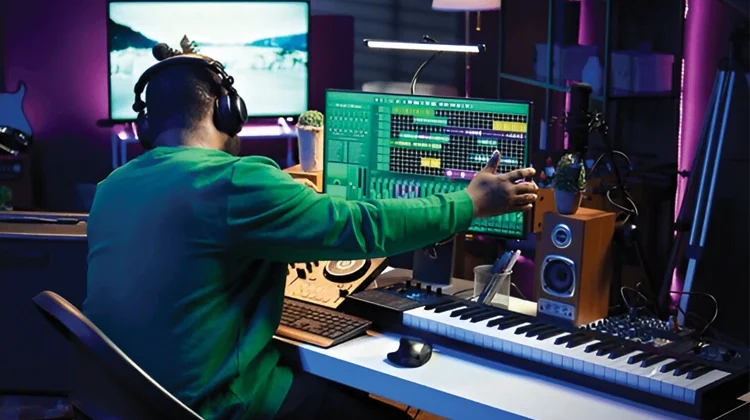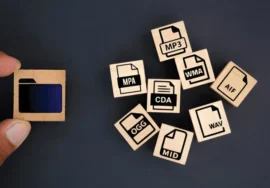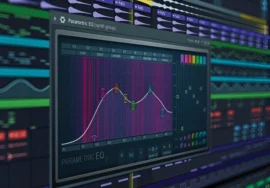
Mastering the Basics
Audio editing is a powerful tool that can enhance the quality of your sound recordings. Whether you’re a musician, podcaster, or video editor, mastering the basics of audio editing can help you create professional-sounding content.
What is audio editing?
Audio editing is manipulating audio files to improve their sound quality, remove unwanted noise, and add effects. Audio editing software allows you to cut, trim, and splice audio clips, adjust volume levels, and apply a variety of effects.
Why is audio editing important?
Audio editing is important for several reasons, including:
- Improving the quality of your sound recordings
- Removing unwanted noise and distractions
- Adding effects to your audio
- Creating professional-sounding content
Basic audio editing techniques
There are several basic audio editing techniques you can use to improve your sound recordings. These include:
- Cutting and trimming audio clips
- Adjusting volume levels
- Removing noise
- Adding effects
Cutting and trimming audio clips
Cutting and trimming audio clips is a basic audio editing technique that allows you to remove unwanted sections of your audio. To cut an audio clip, select the section of the audio that you want to remove and then press the “cut” key. To trim an audio clip, select the section of the audio that you want to keep and then press the “trim” button.
Adjusting volume levels
Adjusting volume levels is another basic audio editing technique that allows you to make your audio louder or softer. To adjust the volume level of an audio clip, select the clip and then use the volume slider to adjust the level.
Removing noise
Removing noise is an important audio editing technique that can help to improve the clarity of your sound recordings. There are several ways to remove noise from your audio, including:
- Using a noise reduction plugin
- Applying a noise gate
- Filtering out unwanted frequencies
Adding effects
Adding effects is a great way to add creativity and interest to your audio. There are a variety of different effects that you can add to your audio, including:
- Reverb
- Delay
- Distortion
- Equalization
Advanced audio editing techniques
Besides the basic audio editing techniques, there are also several advanced techniques you can use to improve your sound recordings. These include:
- Mastering
- Mixing
- Sound design
Mastering
Mastering is preparing your audio for eventual release. This involves adjusting the overall volume level, EQ, and dynamics of your audio. Mastering can help to make your audio sound more professional and consistent.
Mixing
Mixing is combining multiple audio tracks into a single mix. This involves adjusting the volume levels, panning, and EQ of each track. Mixing can help to create a more balanced and interesting sound.
Sound design
Sound design is creating original sounds for your audio. This can involve using synthesizers, samplers, and other sound design tools. Sound design can help to add creativity and interest to your audio.
Audio editing software
There are several audio editing software programs available. The most popular options include:
- Adobe Audition
- Avid Pro Tools
- Apple GarageBand
- Audacity
Tips for audio editing
Here are a few tips for audio editing:
- Use high-quality audio recordings.
- Take your time and be patient.
- Experiment with different techniques.
- Listen to your audio carefully.
- Get feedback from others.
Advanced Audio Editing Techniques: A Deeper Dive
While the basics of audio editing are essential, diving into more advanced techniques can elevate your audio projects to new heights. Let’s explore some of these techniques in more detail:
1. Mastering
Mastering is the final stage of audio production, where the overall sound of a project is polished and optimized. It involves:
- EQ (Equalization): Adjusting the frequency balance to enhance specific frequencies and reduce unwanted noise.
- Compression: Controlling the dynamic range to make the audio more consistent and louder.
- Limiting: Preventing audio from exceeding a certain volume level to avoid distortion.
- Stereo Imaging: Adjusting the stereo width and panning to create a more immersive listening experience.
2. Mixing
Mixing is the art of blending multiple audio tracks into a cohesive whole. Key techniques include:
- Panning: Positioning sounds in the stereo field to create a wider or narrower sound stage.
- Fading: Gradually increasing or decreasing the volume of a sound over time.
- Automation: Creating automated changes in parameters like volume, panning, and effects over time.
- Bussing: Grouping audio tracks to apply effects or processing to multiple tracks simultaneously.
3. Sound Design
Sound design involves creating original sounds or manipulating existing sounds to achieve specific effects. Common techniques include:
- Synthesizers: Generating electronic sounds using virtual or hardware synthesizers.
- Sampling: Using recorded sounds as the basis for new sounds.
- Sound Effects: Creating and manipulating sound effects to enhance the audio experience.
4. Audio Restoration
Audio restoration involves repairing damaged or degraded audio recordings. Key techniques include:
- Noise Reduction: Removing unwanted background noise.
- Click and Pop Removal: Eliminating sudden, sharp noises.
- Declicking: Removing small clicks and pops caused by vinyl records or tape hiss.
- De-crackling: Reducing the crackling sound often found in old recordings.
5. Spatial Audio
Spatial audio creates a 3D sound experience, allowing sounds to be positioned in a virtual space. This is achieved through techniques like:
- Ambi-sonics: Recording audio from multiple microphones to capture sound from all directions.
- Binaural Recording: Simulating the way the human ear perceives sound using two microphones.
- 3D Audio Plugins: Using software plugins to create 3D sound effects.
Tips for Advanced Audio Editing
- Experimentation: Don’t be afraid to try new things and experiment with different techniques.
- Reference Tracks: Use high-quality reference tracks to compare your audio and make adjustments.
- Take Breaks: Regular breaks can help you maintain focus and avoid fatigue.
- Learn from Others: Study the work of experienced audio engineers and learn from their techniques.
- Practice Regularly: Consistent practice is key to improving your skills.
By mastering these advanced techniques, you can create stunning audio that captivates your audience. Remember, the journey of audio editing is ongoing, so keep exploring and learning to push the boundaries of your creativity.
Conclusion
Audio editing is a powerful tool that can be used to enhance the quality of your sound recordings. By mastering the basics of audio editing, you can create professional-sounding content.





